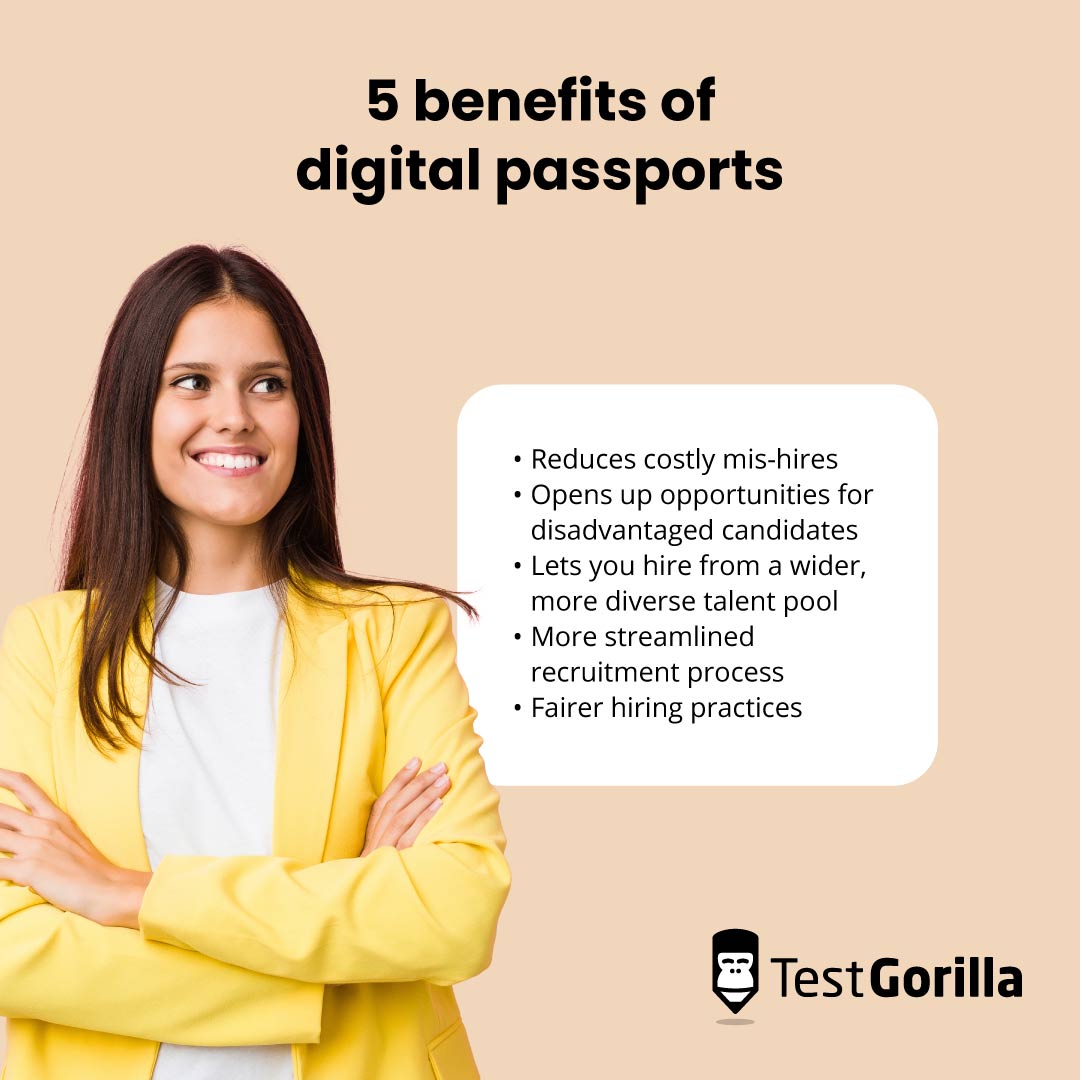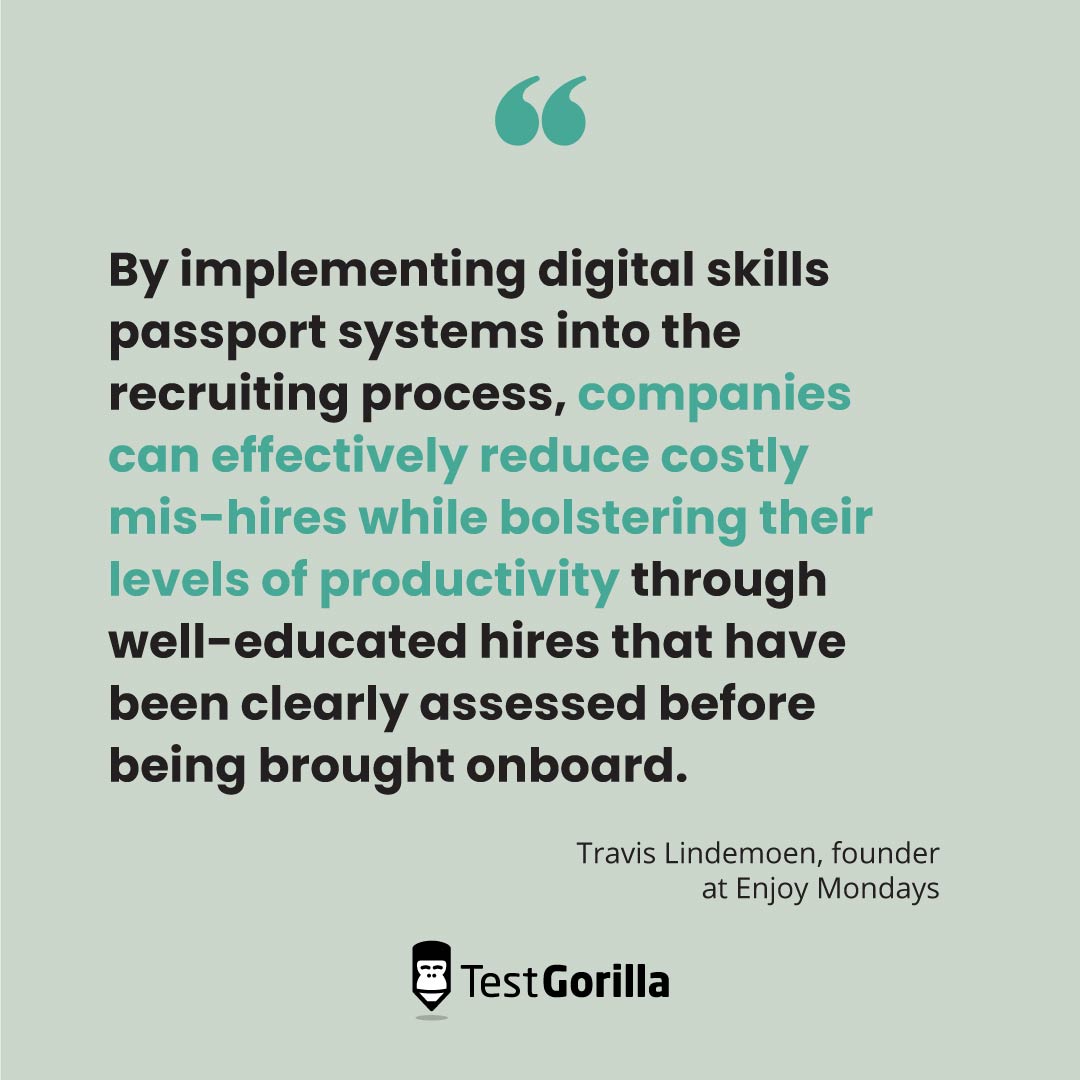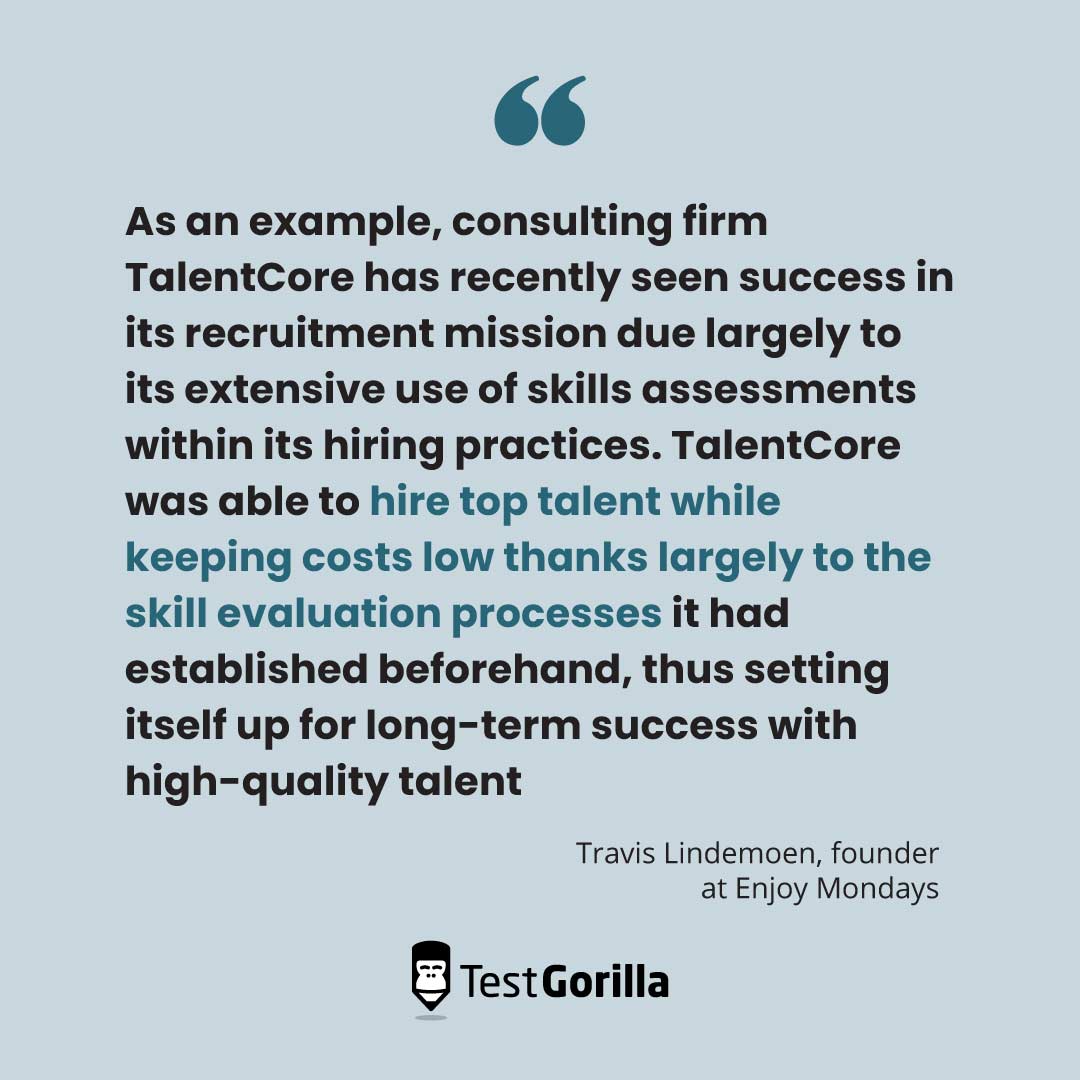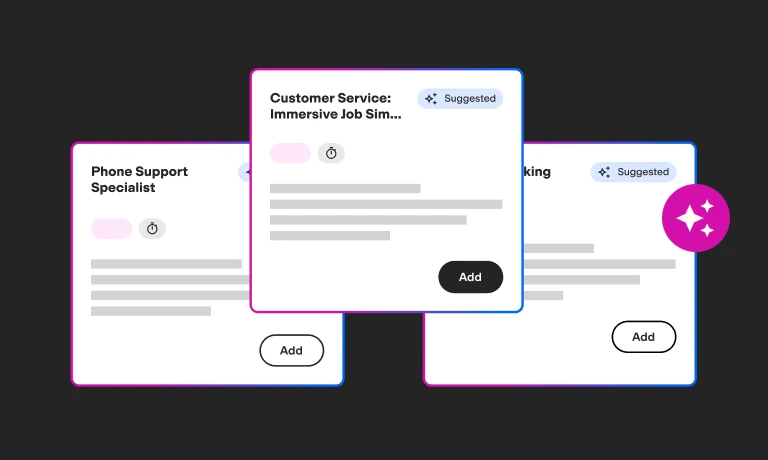Access all areas: How digital skills passports can get diverse candidates into more skilled jobs
According to McKinsey: “Hiring for skills is five times more predictive of job performance than hiring for education and more than two times more predictive than hiring for work experience.”¹
Skills are growing in importance among hiring managers because of their ability to predict job performance, but there needs to be a system to effectively catalog and measure them. This is especially important for younger generations who increasingly value skills-based over theory-based education. These generations are even taking it upon themselves to identify in-demand skills and learn what they need to secure their futures.²
This is where digital skills passports can help. They document non-standardized accreditations and practical skills in an easily digestible and accessible format, including multimedia content.
This is particularly attractive for younger people who find it difficult to access opportunities due to a lack of work experience. Additionally, they’re beneficial to those from underrepresented groups or underserved communities who may not have completed traditional or higher education. For recruiters, they can also be an effective way to assess skills and reduce costly mis-hires.
In this article, we’ll discuss how digital skills passports can help workers find jobs by documenting their skills rather than experience. We’ll also discuss the implications, benefits, and challenges for hiring managers and upcoming generations of workers.
What are digital passports?
Digital skills passports are online documents or profiles that showcase a candidate’s skills and qualifications to potential employers.
Skills passports are designed to make it easier for employers to assess a candidate’s suitability for specific roles. For example, digital skills for technical roles or communication skills for leadership roles. Additionally, they help more diverse workers find higher-skilled and higher-paid jobs without taking traditional, often costly, educational pathways.
With an increasing skills gap and a global shortage of skilled talent, digital passports can connect employers and employees, and help you find the best people for your open roles.
Case study: Multinational technology company IBM uses digital skills passports or “IBM Digital Credentials”, which is run on blockchain technology, to unify credentials for learners without typical two- or four-year degrees. Instead, these learners can document skills gained through online courses, skills-based experiential learning, and on-the-job training. The IBM Digital Credentials platform empowers these employees and students with the technology to prove their applied skills and show that they’re the right person for the job. |
According to IBM: “Digitizing learning credentials has broadened the talent pool, created more diversity in the workplace, and allowed for easier access to individuals with niche skills.” |
5 benefits of digital passports
According to our 2022 State of Skills-based Hiring report, 72.1% of people hired using a skills-based approach like talent assessments are happy in their roles.
Digital skills passports help you hire for skills by translating an individual’s skills and acquired knowledge into badges. You can then make these a requirement for a specific role – and find the talent to match.
Here are some other ways digital skills passports can benefit your company and employees:
1. Reduces costly mis-hires
As mentioned, resumes and degrees aren’t great markers of a candidate’s success in a role. Skills-based hiring and digital passports make it easier to match people to the right position based on their proven skill set and competencies.
By better aligning employees to their strengths, digital passports can help you improve job satisfaction and reduce expensive mis-hires, which can cost 24 times an employee’s annual salary.
In fact, with skills-based hiring methods like talent assessments, 92.5% of companies saw a reduction in mis-hires.
“By implementing digital skills passport systems into the recruiting process, companies can effectively reduce costly mis-hires while bolstering their levels of productivity through well-educated hires that have been clearly assessed before being brought onboard.”
Travis Lindemoen, founder at Enjoy Mondays
Pro tip: Use our ROI calculator to help you determine how much skills-based hiring methods like talent assessments can save your business on recruiting costs.
2. Opens up opportunities for disadvantaged candidates
Candidates who haven’t followed traditional education paths, like those from underserved communities or skilled through alternative routes (STAR) workers, are often overlooked by traditional hiring practices.
As a result, disadvantaged candidates often end up in low-wage employment. However, **a low wage from previous employment does not mean a worker is low in skills. In fact, many workers in low-wage jobs have skills relevant for middle- and high-wage jobs.**³
Additionally, young candidates who want to get a foot in the door but lack experience can struggle to find employment — or stand out in a pile of resumes.
Fortunately, digital skills passports can tell you whether someone has the right skills, without assessing them based on past work experience or pay grade. This helps you better understand a candidate’s skills-readiness for high-skilled jobs and higher-paid work in a bias-free way.
3. Lets you hire from a wider, more diverse talent pool
“Using digital skills passports in the hiring process can be a great way to make sure that you are getting the most suitable candidates for your positions,” says Travis. “Digital skills passports provide recruiters with an objective and reliable view of a candidate’s skill set, which helps them narrow down their selection.”
With digital skills passports, you’re not driven by traditional markers of job success – like resumes or college degrees – that don’t actually predict performance. At the same time, you can help level the playing field for candidates with diverse backgrounds and experiences.
This means you’re more likely to make objective hiring decisions and look for the candidate with the right skills profile. You’re also likely to attract more applicants to your job ads and access a more diverse talent pipeline. This is especially important when you consider that there are 71 million STARs in the US workforce alone that are held back by traditional hiring practices.³
4. More streamlined recruitment process
Digital passports are a basis for knowing exactly which skills and knowledge to look for and test. They help you make more informed hiring decisions while also saving time.
According to Travis, you can “use online assessments to measure candidates’ proficiency levels in specific technical or behavioral fields.” This helps you get a better understanding of each applicant’s capabilities.
Talent assessment platforms can help define your required skill sets and align needed skills to specific jobs. They can also help you streamline your recruitment process by testing candidates for specific skills before they start interviewing.
With digital skills passports as your guide, you know exactly which skills to look for and which assessments a candidate qualifies for, thus improving the candidate experience.
5. Fairer hiring practices
It’s commonly assumed that only low-level skills are required in lower-wage jobs than in higher-value, higher-wage occupations. However, when comparing the skill sets for jobs across wage categories, low-wage jobs require skills that are similar to most middle- and high-wage jobs.³
With digital skills passports, workers who have the same skills but are held back by unconscious hiring bias or a lack of formal education can apply for the same jobs as anyone else.
When you stop relying on potentially misleading resumes, you empower candidates to qualify for skills-based pay instead of role-based pay, which can seriously change their career trajectory.
By using digital skills passports to engage in fairer hiring or promotion practices, you also give employees more career mobility and opportunities to progress internally.
The best insights on HR and recruitment, delivered to your inbox.
Biweekly updates. No spam. Unsubscribe any time.
4 steps to implementing digital passports in your hiring process
Done right, digital passports can help to foster a fairer recruitment process based entirely on merit and skills — and create a better experience for candidates. However, implementing digital skills passports can come with a few challenges you’ll want to be prepared for.
Let’s take a look at how you can successfully implement digital skills passports to retain, promote, and reward talent.
1. Define key skills
Clearly defining in-demand skills in your company helps identify the specific skills required for each role. This clarity makes sure job descriptions accurately reflect the skill set you need. It makes it easier to scan digital passports for those skills. At the same time, it helps attract candidates who have the right mix of skills and competencies.
Start by assessing the existing skills within your organization. Identify the skills that are present in your workforce and determine any skills gaps that need to be addressed. This can involve surveys and interviews with current staff, as well as talent assessments like the Intermediate math test or the Problem-solving test. You can also use assessments to help you identify areas to reskill and upskill employees.
Then, examine any specific job requirements across roles within your organization and select the skills that are essential for each role to perform effectively. Make sure to consider current and future job requirements, and to check they align with broader company goals. For example, if you want to enhance your company’s data visualization capabilities, use skills-based assessments to hire for skills related to data analysis and visualization.
As an example, consulting firm TalentCore has recently seen success in its recruitment mission due largely to its extensive use of skills assessments within its hiring practices. TalentCore was able to hire top talent while keeping costs low thanks largely to the skill evaluation processes it had established beforehand, thus setting itself up for long-term success with high-quality talent.
Travis Lindemoen
Challenge: Defining the specific digital skills needed for each role within a company requires a deep understanding of the responsibilities and requirements of those positions. |
Solution: Conducting thorough job analyses and using talent assessments to uncover existing skills gaps, and then hire for in-demand skills. It’s also important to keep an open dialogue with industry experts, employees, and stakeholders to identify skills that are, or will be, critical for your positions. |
2. Provide access to advanced technologies
For digital passports to work, you need to have the technology and infrastructure in place to support your digital skills program.
This includes talent assessment software to test candidates’ skills pre- and post-employment, as well as a tool or platform to host the digital passports themselves.
When choosing a platform, look for features such as user-friendly interfaces, progress tracking, skills validation, badge issuance, and reporting capabilities. Then, align the platform with your company’s skills framework.
You’ll also want to make sure the skill categories and levels align with the job roles and skills frameworks you outlined in the previous step.
Challenge: Keeping up with emerging technologies, tools, and platforms for measuring and documenting digital skills can be challenging. Additionally, most digital passport technology uses blockchain, which can be a barrier for companies on limited budgets and candidates experiencing digital poverty. |
Solution: Companies can partner with private and public sector initiatives to make this technology more widely accessible. For example, engaging with policymakers, government agencies, and industry associations to advocate for the potential of the technology in enhancing digital skills development and workforce readiness. This can help you anticipate and plan for technological shifts and ensure you have the right digital skills in your workforce. Collaborating with educational institutions and digital experts can also help you stay updated on the latest industry tech and trends – and creating consistency across digital platforms and tools. |
3. Mitigate the lack of standardization
Digital skills passports are cutting-edge technology. By jumping on the digital passport bandwagon, you join the list of organizations that are moving into unchartered territory and paving the way for better hiring practices.
However, this means it’s important to work around a lack of standardization. Here’s how:
Create a skills framework specific to your company. Outline the digital skills needed for different positions while providing a standardized reference point for evaluating and assessing those skills. The more specific you are, the better: include examples or scenarios to illustrate how each skill applies to different roles or functions.
Assess underlying competencies and abilities rather than digital skills. For example, prioritizing graphic design skills over a candidate’s proficiency in particular design software. Where applicable, this approach allows for more flexibility and transferability of skills across different digital environments while retaining the core skills required for the role.
Regularly review and validate the skills listed in employees’ passports. Seek feedback from employees, managers, and stakeholders to identify any gaps or areas for improvement.
Challenge: There’s no universal standard on what constitutes a specific skill. Different companies and industries have varying interpretations and expectations regarding skills and how they measure them. This lack of standardization makes it difficult to define and compare skills across organizations, sectors, and countries. |
Solution: Leverage existing industry frameworks and standards to help you create your own digital skills scheme. Examples include the European e-Competence Framework (e-CF) or the Skills Framework for the Information Age (SFIA). These offer guidelines which make it easier to identify and categorize digital skills, for example. |
4. Ensure watertight security
Like most digital assets, digital skills passports are susceptible to hacks. Therefore, you need to educate employees and candidates about security best practices and the importance of safeguarding their digital passport accounts.
Here are a few additional ways you can ensure a secure digital passport experience:
Implement strong encryption protocols to protect sensitive data within your digital skills passport system.
Assign specific roles and permissions (role-based access control) based on job responsibilities and make sure access levels are regularly reviewed and updated.
Conduct regular security audits and vulnerability tests to identify potential security risks or weaknesses in your system.
Train employees to recognize and report phishing attempts, use strong passwords, and follow secure data handling procedures.
Put data privacy first by making sure the collection, storage, and use of personal data within the digital passport system comply with existing data protection and privacy regulations, such as GDPR or CCPA.
Require multi-factor authentication for users accessing the digital skills passport system. It requires users to provide multiple forms of identification, such as a password and a one-time verification code sent to their mobile device for extra protection.
Develop an incident response plan that outlines the steps to follow in the event of a security incident or data breach.
Challenge: Digital skills passports can contain sensitive information that could be hacked. |
Solution: Implement robust authentication and encryption methods to ensure only authorized individuals can access and modify the passport data. |
The world’s your oyster with digital passports and skills-based hiring
Skills-based hiring is on the rise. This means it’s important to find a way to measure, define, and evaluate the skills you need now and into the future.
When you hire for skills, it makes sense to have a place to document them. This is why digital skills passports go hand in hand with skills-based hiring methods to give you a fairer, more comprehensive picture of a candidate’s ability to excel in a job. They also give candidates and employees a place to catalog and develop their skills portfolio.
In this article, we discussed how digital skills passports can improve the hiring process by helping you identify and find the skills you need. We also looked at how you can combine them with talent assessments to hire the right people for your open roles.
Furthermore, we highlighted key steps to take when implementing a digital skills passport, as well as how to overcome common challenges. For example, define key skills, provide access to advanced tech, figure out how to work around a lack of standardization, and implement watertight security.
With skills-based hiring, you can improve the quality and consistency of your digital skills passport scheme and standardize skills requirements across roles. This lets you hire, vet, and train the right people and get the best skill sets for every position.
Want more diverse candidates in high-skilled jobs? Skills-based hiring lets you tap into diverse pools of skilled talent – regardless of their background. Download the 2022 State of Skills-Based Hiring report to learn more.
Sources
“Taking a skills-based approach to building the future workforce.” (2022). McKinsey. Retrieved May 22, 2023. https://www.mckinsey.com/capabilities/people-and-organizational-performance/our-insights/taking-a-skills-based-approach-to-building-the-future-workforce
“Report: Gen Z Teens Want Shorter, More Affordable, Career-Connected Education Pathways.” (2022). Question the Quo. Retrieved May 22, 2023. https://www.questionthequo.org/news/buzz/report-gen-z-teens-want-shorter-more-affordable-career-connected-education-pathways
“Report: Reach for the STARs: Realizing the Potential of America’s Hidden Talent Pool.” (2020). Opportunity @ Work. Retrieved May 24, 2023. https://opportunityatwork.org/our-solutions/stars-insights/reach-stars-report/#get-report
You've scrolled this far
Why not try TestGorilla for free, and see what happens when you put skills first.





















